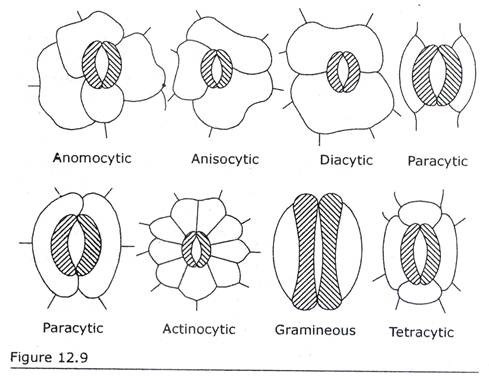ADVERTISEMENTS:
Structural units of Cell: Membranes, Microtubules and Granules!
Previously, the structure of the cell was thought to be as two-phase system, consisting of nucleus and cytoplasm. It was realized that the two phases functioned as an integrated whole and contained within them various organoids such as nucleoli, mitochondria and paraplasm or Golgi complex embedded in a semifluid medium.
Thus, cell appeared as a heterogeneous system comprising elements of different shapes and sizes.
ADVERTISEMENTS:
Electron microscopy has changed this conception drastically and revealed that the basic components of the cell are essentially the forms of a limited number of basic components.
These basic structural units of the cell are:
(i) membranes,
ADVERTISEMENTS:
(ii) microtubules or fibres, and
(iii) granules.
[I] The membranes:
It is mainly lipoproteinous with or without pores and polymorphic in nature. The membrane takes the form of flat or folded sheets, complete shells or tubes acting as mechanical boundaries between different phases and also as semi-permeable membranes controlling exocytosis (outflow) and endocytosis (internal cellular vacuolar formation).
Due to universality of this basic membrane as a main unit of cell led to formulation of unit membrane hypothesis. According to this hypothesis (proposed by Robertson, 1958), all cell membranes had a lipoprotein composition and were 75 A thick. This thickness consisted of three components: protein-lipid-protein, each being about 25 A thick giving a tripartite structure (described later).
However, high resolution studies and precise measurements have shown that all membranes fall into two categories —
Group 1:
Containing plasma membrane and the vacuoles derived from it. It is somewhat thicker (about 90 A or 100 A) and asymmetrical in structure, i.e., inner (cytoplasmic) protein component is thicker than the outer (external) protein component.
Group 2:
Including the membranes of Golgi complex, mitochondrion, nuclear membrane, endoplasmic reticulum and lysosome. These are symmetrical in structure, i.e., both protein layers are of same thickness.
[II] The microtubules or fibres:
These are second basic structural units of the cell. The microtubule might be supposed as a rolled-up membrane. The fibres are solid, being composed of sub-fibres and display a variety of other subordinate characteristics like periodicity and spiralization. From the functional view-point, the fibres are of two categories —
1. Inert structural fibres:
ADVERTISEMENTS:
These include such intracellular fibres as those of tonofibrils, chromosomal and DNA fibres, neurofilaments and extracellular collagen and elastin.
2. Active fibres:
In this group are spindle fibres, fibres of cilium and flagellum, and myofilaments.
[III] The granules:
These are third basic units of the cell and have generally received less attention. The granules may be solid or hollow and sometimes the sections of solid tubes or gyres. The most common and well-studied granules are ribosomes and intra-mitochondrial granules.
Based on the above observations, the cell is referred to as three-phase system comprising three basic units. Thus, of two-phase theory of nucleus and cytosome is no longer valid in the light of modern researches. The main phases of the cell are the following as suggested by Threadgold (1969).
1. External phase:
ADVERTISEMENTS:
It is the fluid or other environment of the cell which may penetrate into cytosome upto nucleus by way of membrane-limited channels or vacuoles. The contents of these channels are always extracellular. Such; penetrating structures facilitate exchange between cell and environment and also provide large surface area.
2. Internal phase:
It comprises the hyaloplasmic matrix present between other cell organoids and nucleoplasm. With the latter, it remains in contact by way of nuclear pores.
3. Membrane phase:
It separates phases 1 and 2 and acts as a mechanical boundary between two environments (external and interna) with different physico-chemical properties. Moreover, it functions as conveyer belts, i.e., carrying inherent instructions and information into cytosome.
The three-phase view of the cell explains better the mechanism of interaction as well as exchange of substances between cell and its environment. Moreover, a direct contact between nucleoplasm and hyaloplasm is easily demonstrated by this conception, whereas two-phase system hardly explains these processes.
ADVERTISEMENTS:
Furthermore, this view asserts that nucleus is no more an isolated entity inaccessible to environment. It is very possible (Threadgold, 1969) that the nucleus receives some stimuli directly from environment and even more nuclear events are initiated (‘triggered’) by external environmental stimuli in contrast to the cytoplasmic environmental stimuli previously supposed.


